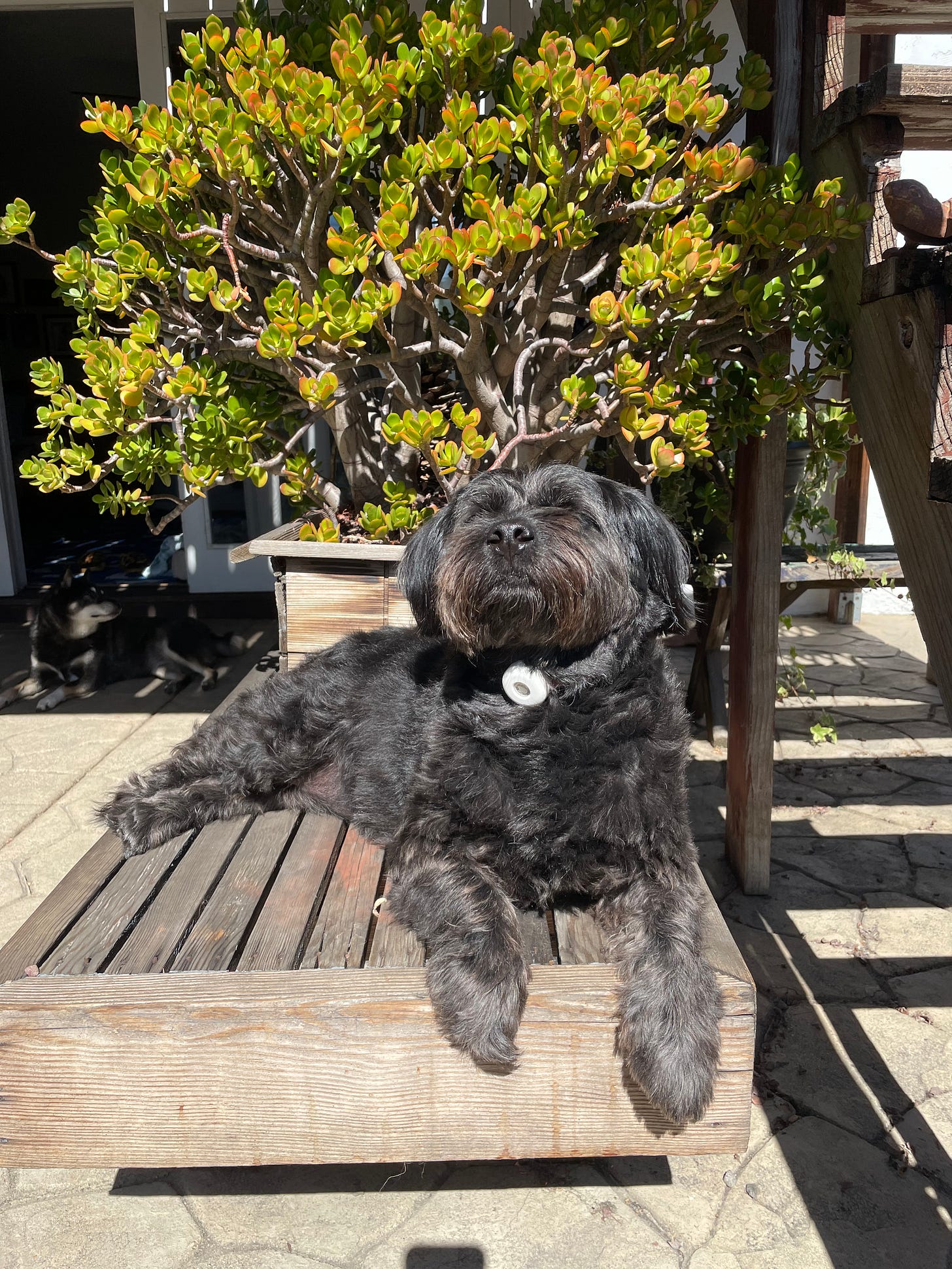The Most Misunderstood Concept in Buddhism
Why "life is suffering" keeps you stuck (and what the Buddha actually said)
Welcome to Beyond Self Improvement issue #134. Every other Wednesday, I share an essay with practical ideas on finding personal freedom in an unfree world.
Dear Friend,
My couple’s counselor got it wrong. Mark Manson got it wrong. Even National Geographic got it wrong.
The idea that Buddhism teaches “life is suffering” has become so commonplace that it goes unnoticed. And ironically, this misunderstanding creates the very suffering Buddhism aims to transcend. People believe they’re powerless. Victims of fate rather than active participants in their own liberation.
The misconception originated from poor translation. The Pali term “dukkha” got translated as “suffering” in early English texts. But dukkha means something more precise: unsatisfactoriness.
The Buddha didn’t say life is suffering in an absolute sense. He taught that certain inevitable aspects of life (birth, aging, illness, death) are accompanied by dukkha. Pain is part of the human condition. Life is subject to dissatisfaction because of impermanence and clinging.
It captures the totality of life’s inherent difficulties: not just acute suffering, but also mild discomfort, disappointment, and the fundamental dissatisfaction of existence when we grasp at transient phenomena.
The phrase “life is suffering” stuck because it’s dramatic, memorable, and sounds profound. Too bad it’s wrong.
Here’s what this looks like:
The burned-out white collar worker who thinks chronic stress is “part of life” and so doesn’t question their relationship with work
The person who stays in a toxic relationship because they believe all relationships involve difficulty, so why bother leaving? You’ll trade one person’s limitations for another’s
The procrastinator who beats themselves up daily, thinking their anxiety and self-loathing are how life is, rather than recognizing it as self-created sorrow they can attend to
Here’s what the Buddha actually taught: Pain is inevitable, suffering is optional.
The Buddha said, “In the past, monks, and also now, I teach suffering and the cessation of suffering.” Not “life is suffering,” but that it arises and can cease. The distinction matters.
The First Noble Truth acknowledges a simple reality: suffering occurs. This isn’t the same as declaring that existence itself equals suffering.
Being human means experiencing pain. You stub your toe. Your body breaks down. You get sick. You feel sad or lonely. You face disappointment and criticism at work. The Buddha himself dealt with physical ailments and sometimes had to skip teaching because his back hurt.
And if you’re emotionally open to others, you’ll feel their struggles too. That empathic discomfort is part of being connected to the world around you. None of this is personal. It’s what comes with having a human body and an open heart.
But here’s the key: this kind of pain isn’t what the Buddha wanted to free us from.
In the Samyutta Nikaya, the Buddha taught the parable of the two arrows. The first arrow is the pain life brings. The second arrow is what we do to ourselves—the resistance, anger, fear, or rumination we add. The first arrow is inevitable. The second arrow is optional.
The Four Noble Truths point to a crucial distinction. There’s the pain that’s simply part of being alive, and then there’s the suffering we pile on top through our reactions.
We get angry about being in pain. We cling to pleasant experiences. We turn physical discomfort into a story about ourselves: “Why is this happening to me? What did I do wrong?” We blame ourselves. We blame others. We get depressed about the state of the world. These reactions—whether we’re pushing away what we don’t like or grasping at what we do—create unnecessary layers of suffering.
This is what we add through clinging, resistance, and unconscious patterns. As Carl Jung wrote: “Until you make the unconscious conscious, it will direct your life and you will call it fate.” After 20 years of studying Buddhism, I can tell you this is good news. It means your life is not predetermined misery. You have agency.
The freedom lies in this: you can have a higher threshold for pain and a lower threshold for suffering.
Buddhist teacher Steve Armstrong said it well: “It is such a joy to be able to offer some action, some words, some behavior that relieves suffering.”
When you understand that clinging is the source, you realize happiness isn’t something you gain. It’s freedom from grasping.
This is the shift from being an enslaved person to becoming a student. Instead of running from pain, you investigate it.
All suffering is workable. Life is workable.
When you become aware of your suffering and its causes, you reclaim your freedom. Most people aren’t even aware of the depth of their suffering. They’ve normalized it, called it “life.” But once you see the difference between unavoidable pain and optional suffering, something changes. Less clinging, less suffering.
The result? You stop being a victim of circumstance. You develop the capacity to experience pain without it disrupting your peace. You build resilience not through toughness, but through wisdom.
We’re circling back to what the Buddha knew 2,500 years ago: most people come to the spiritual path because they are suffering. Not because “life is suffering,” but because they’ve been creating unnecessary suffering and long to become free of it.
People are waking up to the cost of unconscious suffering. We’re learning that Buddhism isn’t about accepting misery. It’s about investigating how our minds create suffering and finding liberation.
Understanding this distinction opens up possibilities. You develop awareness of your patterns. You learn to respond rather than react. You choose to be a student of your sorrow rather than a servant to it. This is a universal yet deeply personal path, and the promise of Buddhist wisdom is available to anyone willing to investigate: not a life free of pain, but a life free of suffering, or at least significantly less of it.
And that freedom? That’s worth every effort.
Understanding this distinction intellectually is one thing. Living it is another. But the path is open to anyone willing to face life as it is.
If this resonates, share it with someone who might be carrying unnecessary suffering. Sometimes, the right perspective at the right time changes everything.
P.S. You don’t need to be Buddhist to benefit from this insight. The distinction between pain and suffering is universal. It’s observable in your own experience, right now.
Keep observing,
Ryan




Beautifully clear. You rinsed the despair out of “life is suffering” without turning it into a TED Talk on positive thinking. The Buddha didn’t preach misery. He taught mechanics. Pain happens. Identification is optional. Blessed be the ones who stop adding the second arrow.
Great article. I use the concept of the 2nd arrow a lot in my work as a CBT therapist. I use it to help clients understand that 'all emotions are allowable and none need be excluded', so that their secondary reaction to an unwanted emotion doesn't become a second arrow. Instead, it can be integrated (without being suppressed or fuelled) into 'what is here'